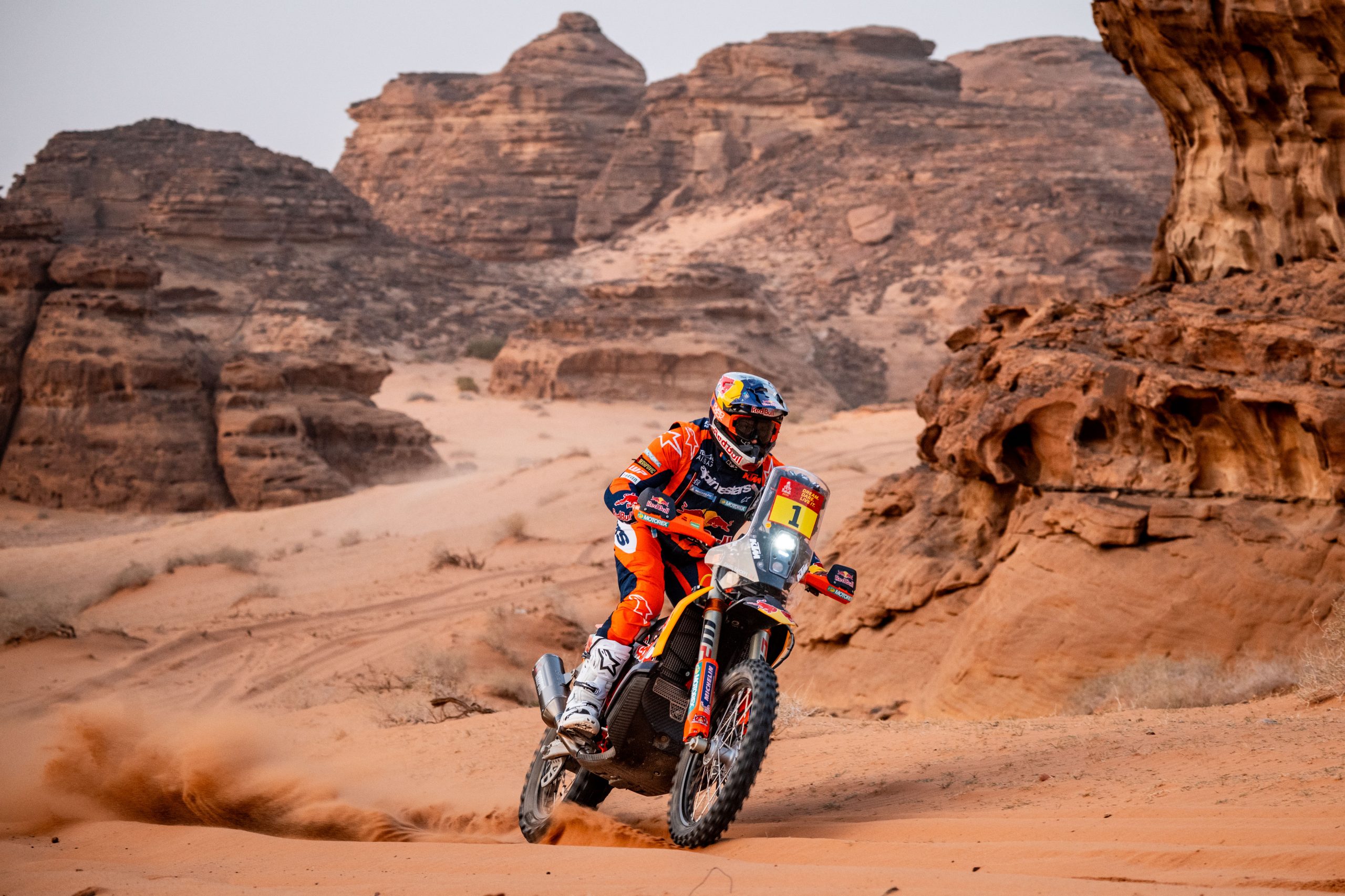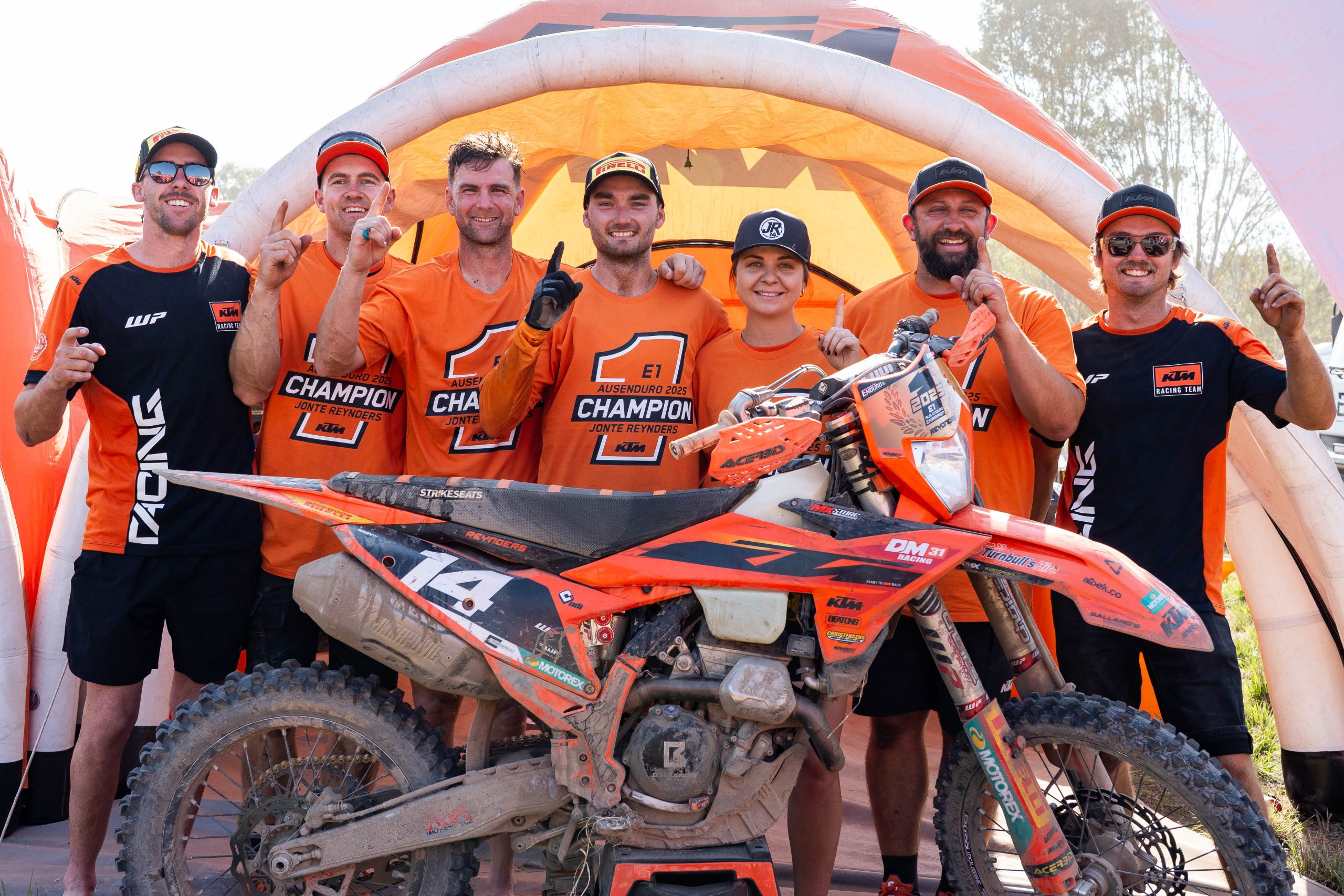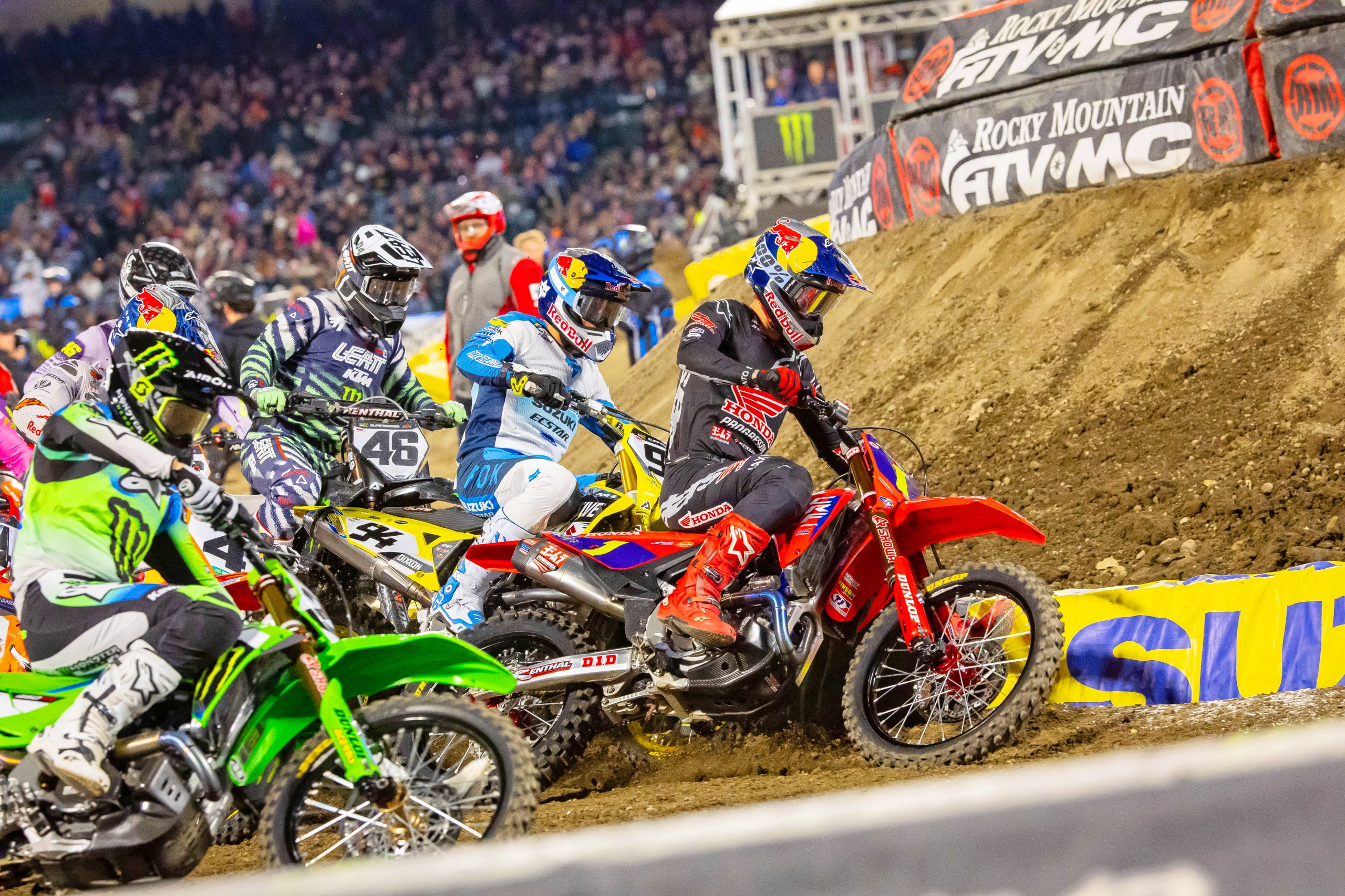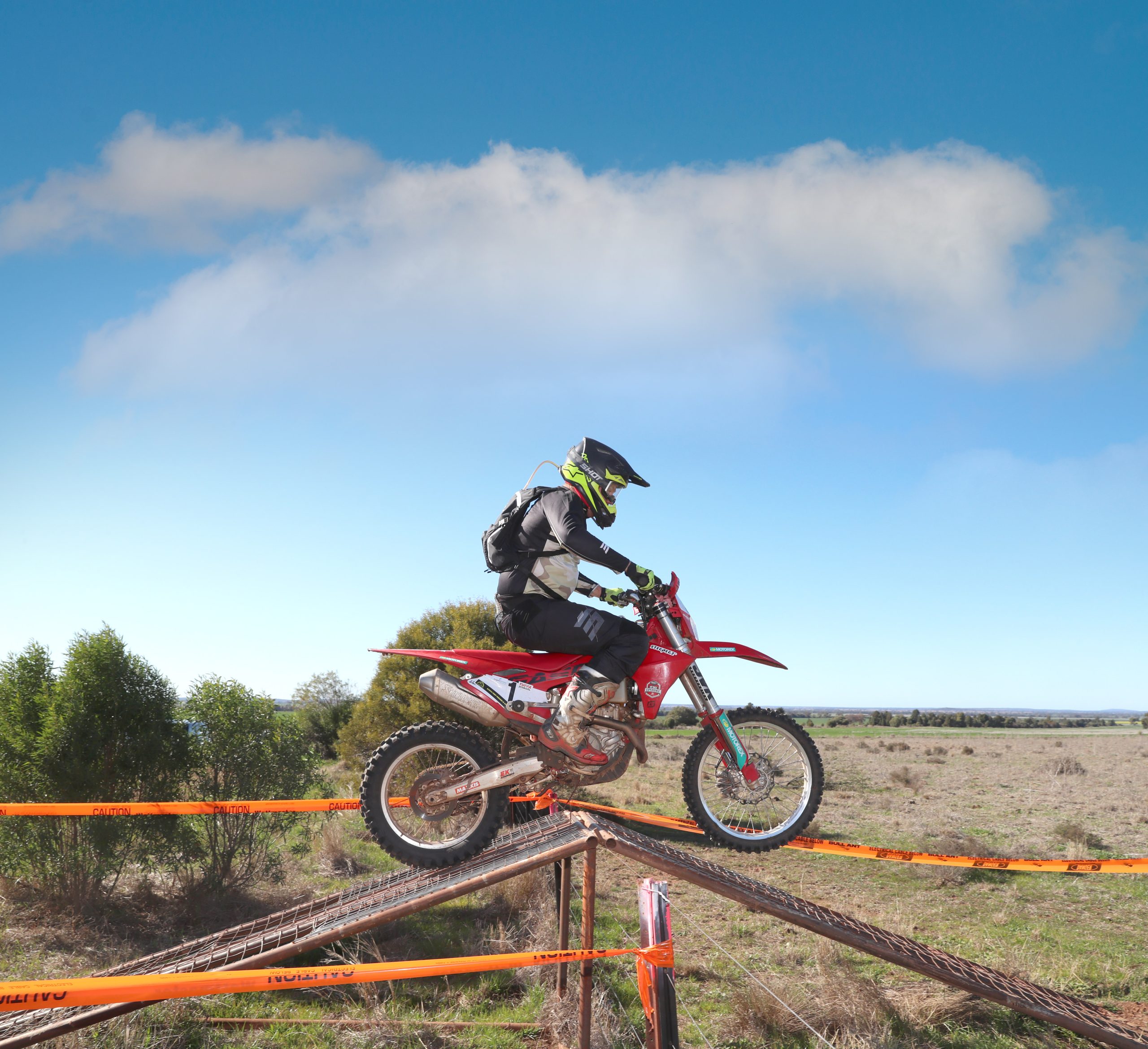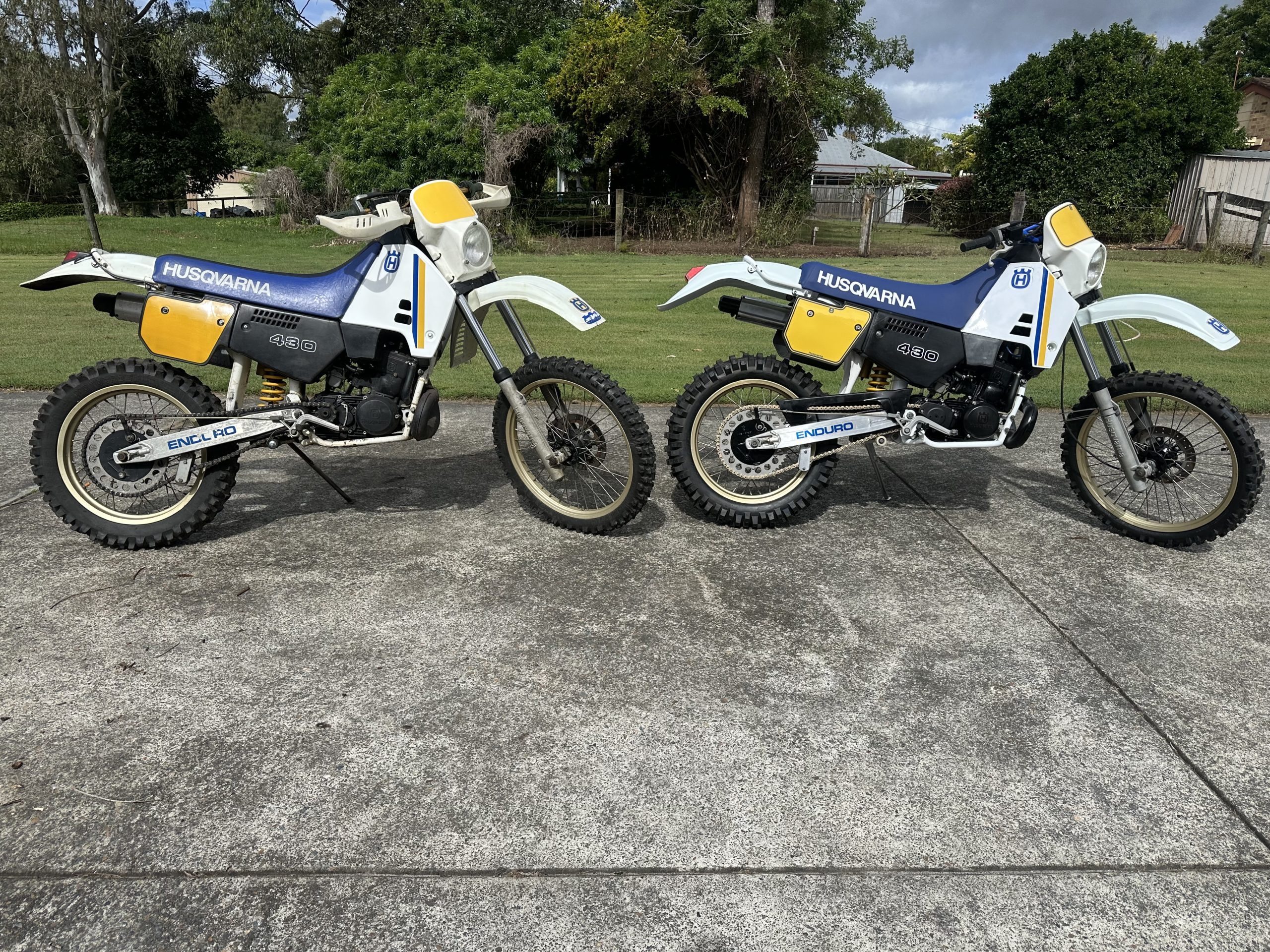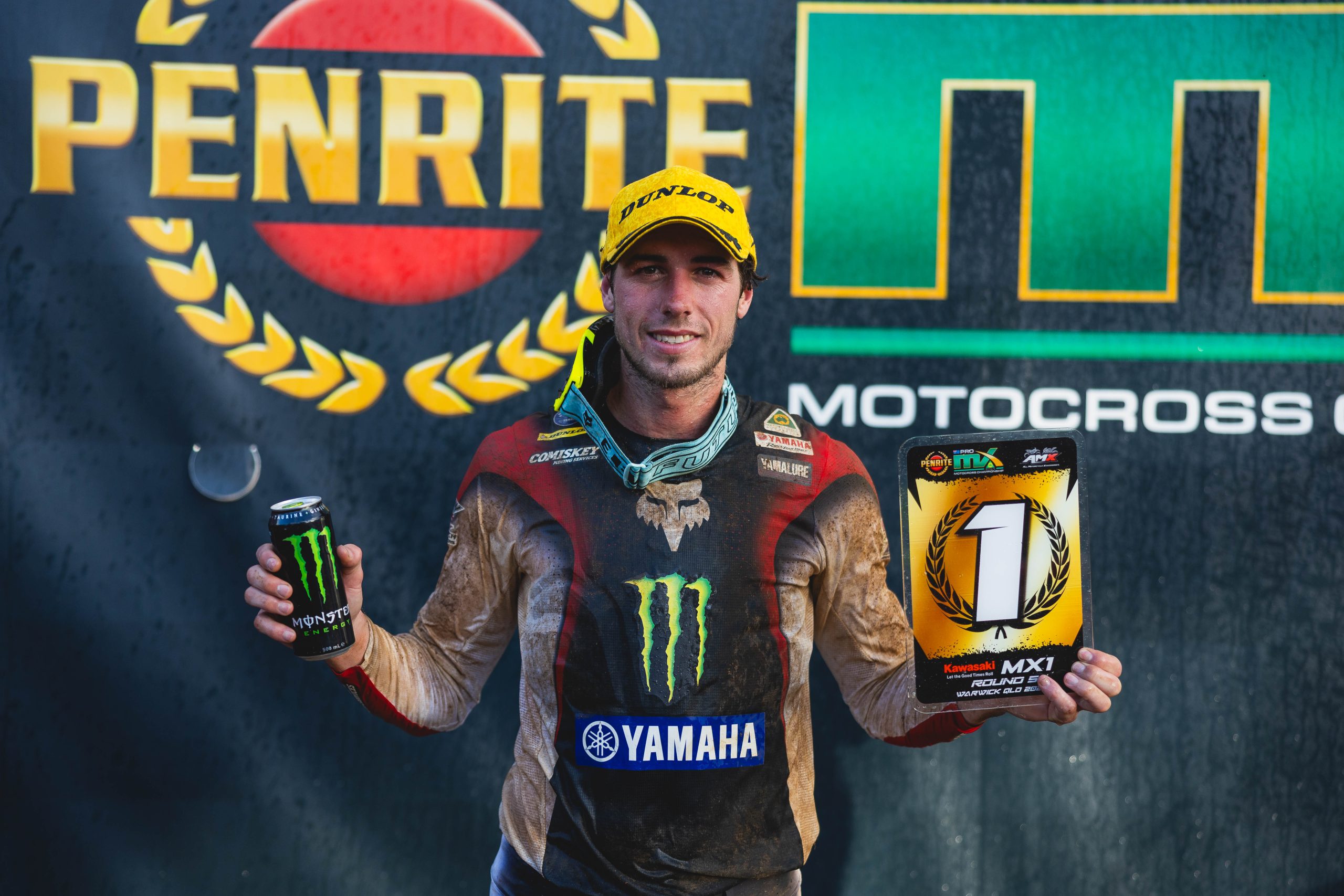It’s difficult making a dollar in any kind of business but promoting the sport of supercross is perhaps even harder. When you take on the giants of AMA supercross with the vision to make SX truly a global sport, you need big balls and big dollars to back it up. Adam Bailey seemingly has both but it wasn’t an overnight land-in-your-lap scenario.
Bailey and his partners were the driving force behind the successful AUS-X Open events and the brain-child of the World Supercross Championship. The WSX Championship has been a humble and perhaps turbulent road so-far so it came as no surprise to learn that Bailey resigned from WSX in April this year.
There’s no doubt the business of supercross is a hard slog and as supercross is very much a sport of passion with more fans than participants, it comes with plenty of arm-chair critics. So let’s learn something from someone that lives and breathes the business of supercross.
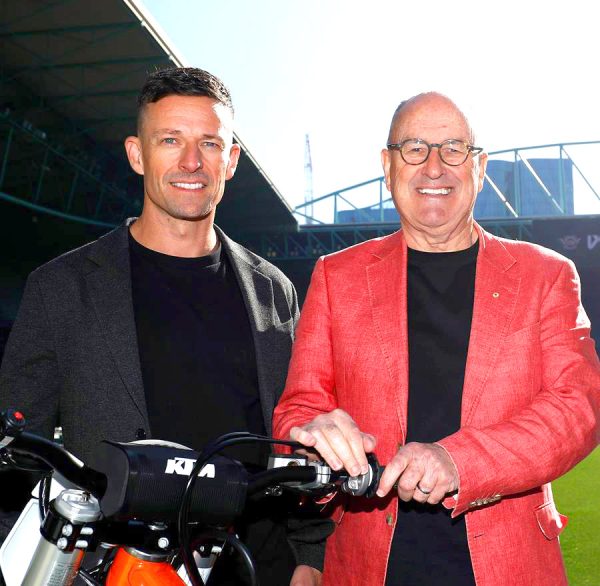
RACER TO RACE PROMOTER
Many may not know that Adam Bailey was a keen motocross and supercross racer that held his own in the A-Grade ranks. Bailey raced at the modest end of the pro-ranks before finding himself wanting to run events that he thought could be done better, and why not? Bailey was certainly qualified being a participant and having studied marketing and commerce at university.
Bailey didn’t just wake up one day and start working on the AUS-X Open. It was Bailey, along with Mick and Cam Sinclair who ran the Mini SX at the Frankson BMX track in 2006 and 2007. Although modest by today’s standard, those Mini SX events were at capacity with riders and spectators and were a sign of things to come.
“I was managing Cam Sinclair before I began promoting events. That’s how I can cover so many angles in the sport because my career in the sport began by managing him, but I studied marketing and commerce before that. I started managing Cam because he was a better rider than I am but he knew nothing about sponsorship and marketing. We were riding together and he had started riding freestyle and people were pulling up on the side of the road to watch and I said, “we should be charging for this.” That’s where the Mini SX idea began.
“I’m a believer that if you see something that you believe can be done better, then you have to give it a crack. When it comes to supercross, at a time in Australia when I felt supercross wasn’t in a great place, post Super-X, post Supecross Masters, and I had been around the sport through both of those eras as a fan, as a rider and as a commentator. I saw some areas for improvement and that’s where it all came from”.
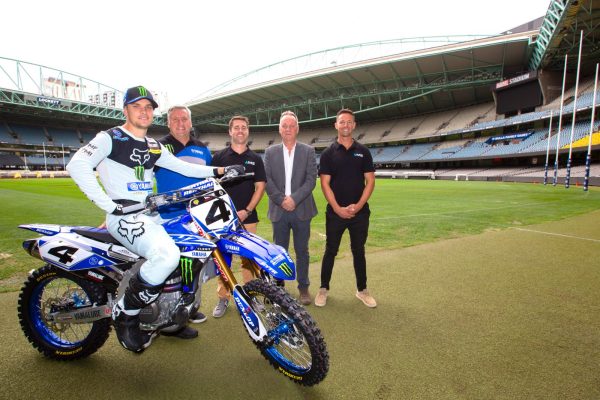
BIG BANG
While Bailey had a head full of ideas and some moderate success with the Mini SX, it was optimistic to say the least that he and his team from the AME Group could pull off the AUS-X Open at Sydney’s Allphones Arena, starting from scratch.
“It was a big risk starting AUS-X Open. We modelled it off a combination of the Bercy event in Paris which we went to and the US Open of Supercross and combined it with entertainment like Nitro Circus. It wasn’t until a couple of years after the first AUS-X Open that we decided we needed to over-see the Australian Supercross Championship to ensure the series continued to move forward and to control our own destinies with the AUS-X Open”.
“It was controversial with the other promoters who were hosting rounds of the Championship, but we became the commercial rights holder of the Championship. That meant we were responsible for the entire series and the promoter for the series but there were still promoters of other individual events that made up the Championship. They could benefit from ticket sales and sponsorship because they were their events, but we were responsible for the Championship as a whole, trying to put guidelines in place like the type of venues to be used. The goal was to lift the profile and the standard of the events.”

GOING GLOBAL
There’s no doubt the sport of supercross was on the rise in Australia off the back of the AUS-X Open with the 2019 event regarded as the biggest supercross event ever staged in Australia. The following year, the COVID-19 pandemic killed off almost every sport in the country. However, Bailey and his business partners were already working on the World Supercross Championship.
“Off the back of COVID, I got wind that Feld (Feld Entertainment: promoter of the AMA Supercross in the USA) wasn’t going to renew their World Championship rights with the FIM. Previous to that, we had already expanded off the back of AUS-X Open into New Zealand and we were already investigating expanding internationally, looking at Asia and the Middle East because the US series doesn’t leave the US. It was that plain and simple. So when we learned Feld was not renewing their rights, myself, Ryan Sanderson and Tony Cochrane created SX Global and with an investment group, Mubadala Capital, we started the World Supercross Championship.”
With the World Supercross Championship starting with a modest two events in its pilot year of 2022, there were six rounds proposed for the 2023 Championship, however, just three eventuated. In the middle of this a new investor group was taking the reins. Bailey remained CEO of WSX until April 2024.
More recently, the FIM has announced SX Global will continue to promote the FIM World Supercross Championship until 2033. Shortly after this announcement SX Global appointed co-founder and former CEO of Nitro Circus, Andy Edwards as their Executive Chairman. It seems the fast-paced world of supercross is full of acronyms, dollars, smoke and mirrors. The good news is WSX looks like it has a future.

INDIAN SUPERCROSS RACING LAEGUE
WSX hasn’t been the only movers and shakers in supercross in recent times. The CEAT Indian Supercross Racing League (ISRL) sprang to prominence in 2023, catching Australia’s attention thanks to the success of Matt Moss racing there. While the Indian League may not be a global sensation, it is predicted to be huge in India and given the population, there will be a lot of people watching supercross. Bailey was equally thrilled for the success of the ISRL.
“I guess what we showed with WSX is that there is excitement and opportunity for the sport around the world and that there are fans that love it outside the US and that others can promote high quality supercross events around the world that can be commercially successful. I like to think I helped the Indian guys to fire up and get the Indian Supercross Racing League off the ground. I was excited and proud to see the Indian guys run successfully last year”.
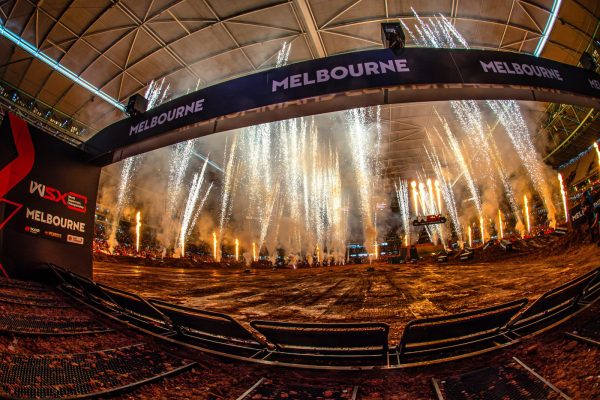
BACK TO BUSINESS
With Bailey now out of WSX, what’s next for the big mover and shaker of supercross in Australia?
“I’ll be doubling-down on my commitment to the sport and wanting to continue having an impact. Whilst I’m not an active part of the AME Group business since leaving for WSX, I know the team there will continue to do great things. Our belief has always been that the Australian Championship should be the biggest outside of the US and I know they can get it there”.
“I just want to have an impact and do things that are hard to do. We created Jett and Hunter’s brand (Jettson.Co and Hunta) alongside the Lawrence family and I really enjoy doing big PR stunts and launching events. I just want to have an impact, grow the sport and continue to be involved in it”.
“It could be easier working a normal job for someone else but that’s just not me and that’s probably the thing I didn’t like about SX Global in the end. I always say, I am just not a very good employee because I have a clear direction in where I want to go and what I want to do. I am confident in all of that”.

“If I am told to stay in my lane, which I was from the start of SX Global from the moment it kicked off, it’s a very different structure to what I am used to. We had shareholders, private equity, Tony (Cochrane) was the president, I was told to stay in my lane and for someone entrepreneurial that just wasn’t my cup of tea, to be honest”.
“Supercross is a tough business and more complex than people imagine. Fans have a higher expectation now with the track, the track size and that pressure leads you to bigger outdoor venues covered in grass that are utilized for football, A-League (soccer), Big Bash (cricket) and concerts. That adds huge costs to try and protect or repair grass which can cost up-to half a million dollars if it were to go badly. That’s why commercially it gets quite hard as there are some huge variables with big consequences”.
“It’s not just a case of booking the venue, building the track and selling tickets. These days the venues are locked up commercially. They have caterers with exclusive rights to sell food and beverages, their own security and grass supplier if you need to replace it. They have all these things that need to make margin which makes it super expensive”.
From a business stand-point, supercross cannot survive from ticket sales alone. It needs sponsorship and in some instances, some government support. Therefore, the industry and the sponsors really do make it happen. It cannot happen without them”.

“Back in the day I’m sure sponsorship money came much easier. I think sponsorship was done more on a friendship basis, sponsoring things for signage. These days sponsorship is a more sophisticated decision because of brands making the decision to spend against digital.
“For example, you take one dollar and spend it on sponsorship versus one dollar and spend it on digital, the digital spend is completely measurable, completely trackable and you can target your audience exactly how you want. With sponsorship, you can’t. So you have to be good at sponsorship to make the business of supercross work. You have to deliver a measurable return for the brands involved and you have to help the fans draw an emotive connection to the brands or there is nothing in it for them and this is the key”.
“The question is how to make supercross attractive for people when there is so much out there? When AFL is such a juggernaut, how do find ways to give brands access to fans and new fans than what they are getting with traditional sports and marketing mediums? It’s the topic I think about it every day but I genuinely love it because I love the sport. The bike industry is full of my favourite people and I couldn’t think of a better way to try and earn a living.”
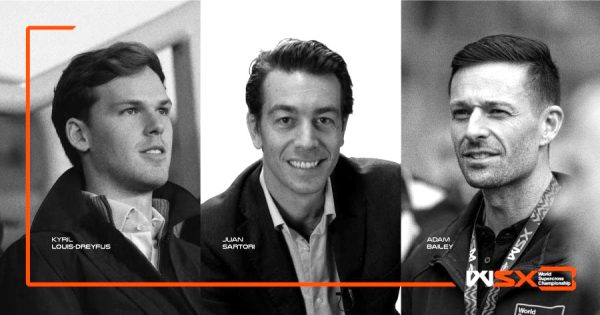
WORDS // STEPHEN TUFF
PHOTOS // ADB

